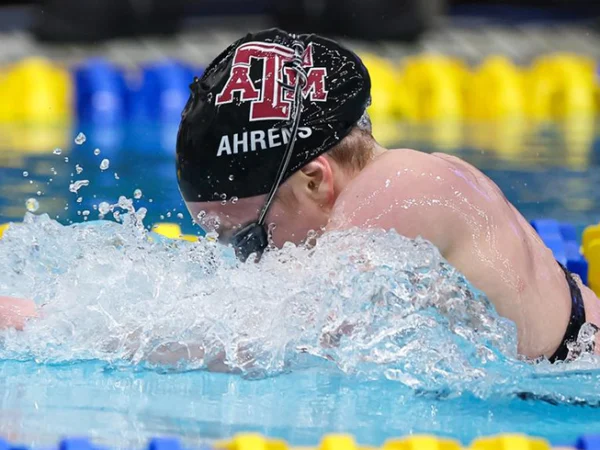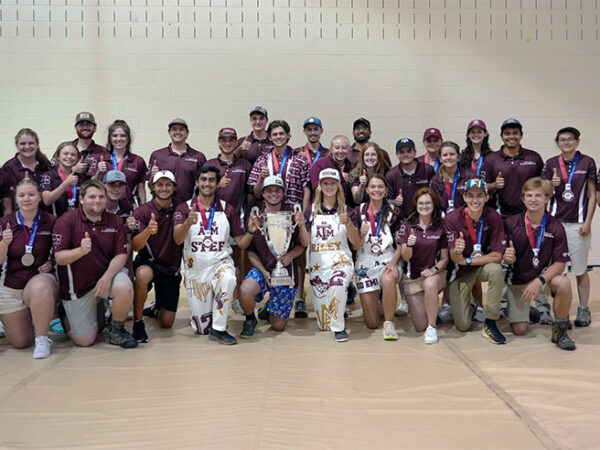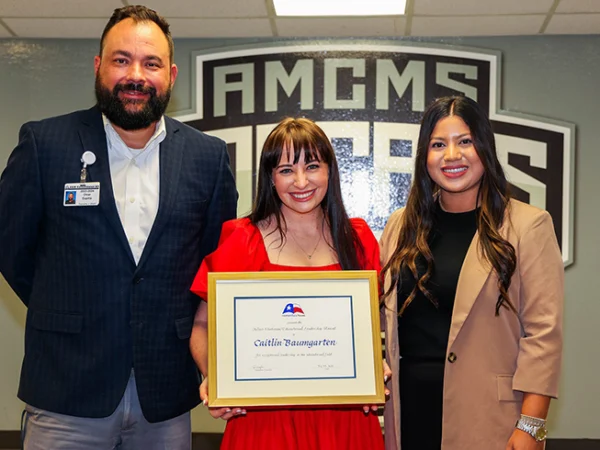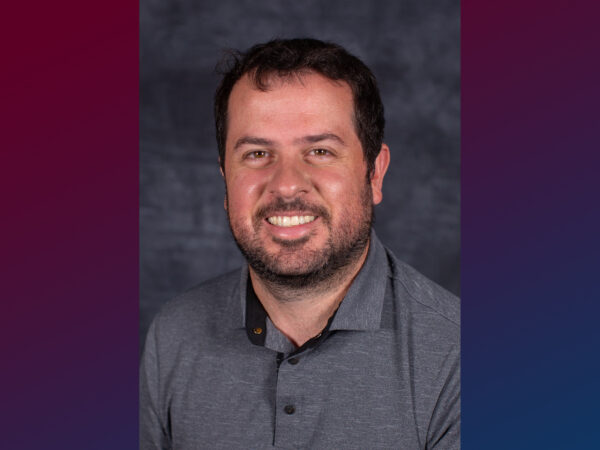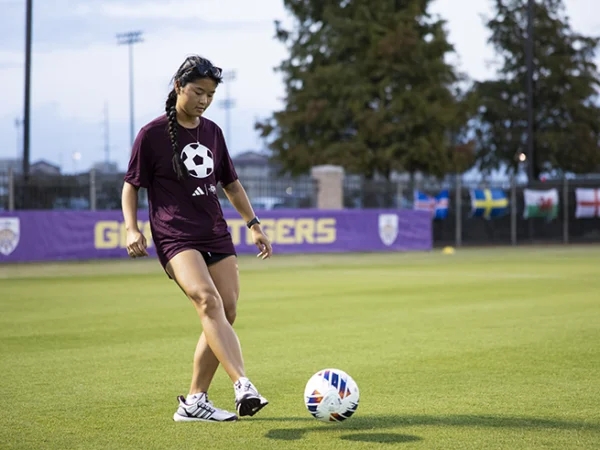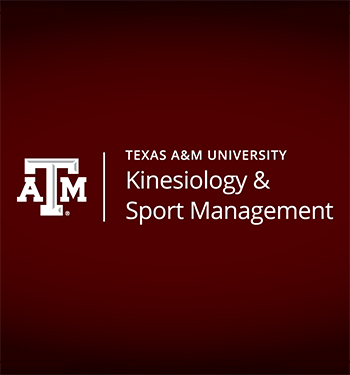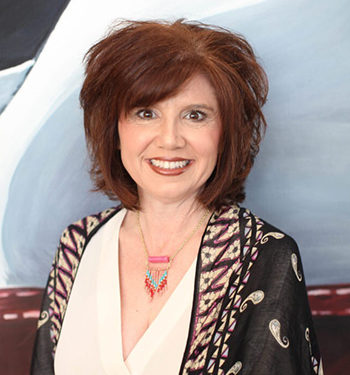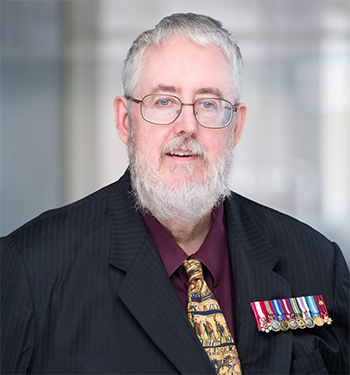Developing High-Impact Leaders: U-STAR’s First Semester
It was considered a very calculated risk but one Dr. Marlon James knew had to be taken to address challenges with retaining teachers in Texas urban school districts.
Four Texas A&M clinical teachers began their residency at Thompson Elementary in Fall 2016 as part of the Urban Student Teacher Advanced Residency (U-STAR) program. U-STAR is a three-year partnership with Spring ISD to help preparing teachers to transition into and thrive within urban schools.
“The wonderful thing about the U-STAR program is that they’re with us from day one. It’s not like the traditional clinical teaching program where they come in after everything has already gotten started,” said Dr. Robert Long, Thompson Elementary principal. “These ladies were here August 5 and participated in staff development with all of our teachers. They are part of the family.”
The U-STAR students are getting experiences unlike any other program in the college. By being in the classroom from day one and being part of the authority structure in a classroom, the students have the ability to manage a classroom and redirect behavior because they are considered staff members.
“I get to do morning duty, afternoon duty, I’ve been the teacher in charge for more than a week. I tutor kids after school. I feel like a teacher. I am a staff member. I am someone that people will turn to and ask what I think we should do. I feel like I’m actually being treated like a teacher and not just a student,” explained Courtney Hamlyn, kindergarten teacher.
Hamlyn and the other clinical teachers admit that has been the biggest challenge – adjusting to life as a teacher. However, they consider the experience rewarding and they know they are making a difference in the lives of their students.
“These kids have taught me to be patient. I think it’s something that every teacher knows they need to have but when you’re in a classroom with them and you see their struggles and what they need you realize the amount of patience you need for them is just above and beyond,” said Karli Anderson, first grade teacher. “They’ve really taught me to be patient and they taught me that I want to be patient. I want to be patient for them because I want them to reach the highest level of success they can.”
For other Texas A&M students considering the program, the U-STAR students have one piece of advice – take the chance. They know the education they are receiving is making an impact, but nothing like the impact of being in an actual classroom and putting what they have learned into practice.
“Absorb every piece of information and advice that anyone ever gives you. That’s what helps you grow. All the things you learn on campus – the content they teach you and the strategies they teach you – that’s real stuff, you just have to learn how to be able to adapt it into what your own personal beliefs are and how it can help benefit you in the classroom,” added Anderson.
“I feel so much more confident when I walk into a classroom. I don’t feel like I’m walking into someone else’s classroom – it feels like my own. It gives you a lot of confidence in your abilities. You can try and see what works for you and what doesn’t. I really found out a lot about my own teaching philosophy and classroom management just by trying new things and seeing different things,” explained Emily Jernigan, first grade teacher.
That confidence will play an integral role when they start their first year of teaching in Spring ISD. As part of the U-STAR program, the clinical teachers will be offered full-time positions in Spring ISD after the residency is complete. They will also receive support from Texas A&M faculty for two years after graduation in the form of professional development.
While the program has been successful thus far, Dr. James, associate director for the Center of Urban School Partnerships, knows changes need to be made.
“We knew that it would work in the sense that we were basing it upon the best available research. The beauty of this type of research model is that we’re not trying to control all of the variables. We’re designing the intervention, we’re letting that intervention play out over time and then we’re trying to better understand how to improve that initiative over time.”
The first plan of action is to change policies for the U-STAR program. This program has created a new type of student – a paraprofessional. Right now, there are no policies specifically related to a paraprofessional clinical teaching in a school district.
“You have to figure out how to create synergy between all of the policies and procedures and personnel at four or five different levels. You get several complex conversations happening which is healthy because it helps us to rethink what we’re doing in some ways.”
Dr. James and his colleagues are also looking to move senior methods courses to Spring ISD. Right now, the students are being taught methods by a group of four teachers and being assessed by another instructor on those methods. The hope is to fuse the disconnect by having methods courses taught in Spring ISD.
Supporting Spring ISD Transitions
After seeing the quality of work from the U-STAR students, Spring ISD asked our faculty to address other issues within the district. The district hires approximately 50 teachers mid-year to start in January. With no training systems in place, that transition was difficult.
“That allowed our faculty to develop a series of professional developments for them to help those teachers transition quickly into urban schools. A lot of it was based on what we learned from the U-STAR students,” explained Dr. James.
The success of that professional development prompted Spring ISD to ask for help with the remaining teachers hired each year.
“We’re talking about 1,200 teachers we can impact every single year in just one district. When you multiply that by every single student who they interact with on a daily basis you start to see the type of impact that this one small idea is beginning to have.”
“It’s really helped us push to become a school for developing teachers, a lab school for being in the service of students but also learning the skills and techniques to become a teacher,” added Dr. Long.
You can find out more about U-STAR and how to apply by visiting http://tlac.tamu.edu/ustar
About the Writer
Ashley is the Media Relations Coordinator and responsible for news coverage in the Department of Teaching, Learning and Culture as well as the Department of Educational Psychology.
Articles by AshleyFor media inquiries, contact Ashley Green.


